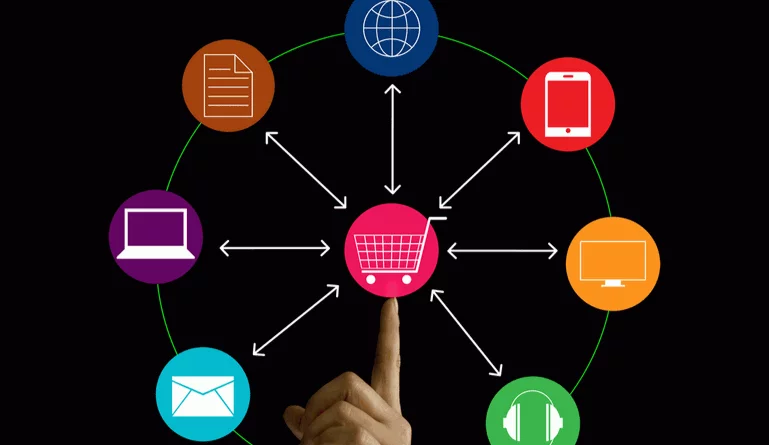Digital marketing makes it easy for brands to get in front of customers – the right customers. With the ability to segment and target audiences, test, and capture results to optimize quickly, digital marketing has changed the way that businesses reach their target market. In many ways, it has changed the primary forms of marketing communications from traditional methods of print ads, radio and TV spots, and billboards to digital banner ads, social media ads, email campaigns, and more. While there are huge benefits to digital marketing, it’s important that businesses stay aware of all the channels their customers may be engaging with.
What is cross-channel marketing?
According to Wordstream, cross-channel marketing is “the practice of using multiple channels to reach customers. Also known as cross-channel marketing, multi-channel marketing also makes it easy for customers to complete desired conversions on whatever medium they are most comfortable with. Multi-channel marketing lets the user decide, giving them a choice. In today’s modern marketing era, there are many channels a business can take advantage of in order to reach potential customers.”
When setting up marketing campaigns, then, it’s key to consider all channels that are an option for your brand, including:
- Retail storefronts
- PPC and search advertising
- Website landing pages and blogs
- Direct mail
- Different social media platforms, such as Twitter, Facebook, and LinkedIn
- Email marketing
- Catalogs
- TV and radio
- Outdoor advertising
While each of these channels may not be appropriate for each brand (a B2B software company might not get the best results advertising on a bus), nor are they all affordable for each brand, it’s important to consider creating a mix of engagement methods.
Why cross-channel marketing?
At a digital agency, your specialty is presenting your clients to their customers online and on mobile. But it’s important to work with them to create cross-channel experience that your agency, another agency, or the client’s in-house team can build. Why?
- 62% of consumers who engage their favorite brands on 10+ channels make weekly purchases
- 30% higher lifetime customer values are attributed to consumers shopping across multiple channels
- 51% of companies today use at least eight channels to interact with customers
- 89% of customers are retained by companies with omni-channel engagement strategies
- Even while the benefits are clear, only 9% of marketers can currently engage customers across channels on a consistent basis
- 10% spend increases are associated with online customers who receive omni-channel marketing
Ultimately, for a lot of brands, more communication channels mean more engagement. While brands often need to use segmented and targeted advertising to see ROI, sometimes a wider net is a better bet. It’s also possible to segment your audiences by job title, region, company, gender, or more and still use several different channels, such as direct mail, email, social media, and digital banner ads. You are doing your clients a disservice if you’re not helping them execute cross channel campaigns that are a mix of social media ads, PPC and search ads, print ads, and more to help grow customer engagement.
How to execute better cross-channel marketing
There are several ways to create successful cross-channel marketing. Here’s where your business should start.
- Some cross-channel combinations work better than others. If you’re limited in budget, try the following pairings to see the greatest engagement success: Computer / mobile, TV / mobile, computer / TV, radio/mobile, computer/radio.
- Google Ads PPC ad extensions allow for easy multichannel marketing. The Click-to-Call Extension adds a phone number to ads, combining online search and mobile activity. There’s also an option to let advertisers add a coupon to a PPC ad, letting local users take their online search results into the physical store.
- Direct mail – like catalogs, postcards, and more – and print ads in magazines can include URL for more information. Whether it’s asking customers to find out more on a landing page or go online to receive a special offer, many brands easily combine their physical print touch point with an additional web touch point by including URLs to their direct mail pieces.
- Plenty of TV shows, like The Tonight Show and The Voice, are using hashtags to increase customer engagement. These hashtags encourage those watching to join the online conversation on Twitter or another platform to increase brand attention and combine the impact of a TV screen with a mobile device or computer screen.
- Above all, be consistent. Using different channels doesn’t mean different messaging. Providing a consistent experience to customers is key. Make sure you’re using the same or similar taglines, copy, tone, and other elements in each marketing asset.
If your clients are looking to increase their brand exposure, grow brand awareness, and develop new customer engagement as well as customer loyalty, cross-channel marketing is an important part of the plan. For more about multi-channel marketing efforts, read more about how omni-channel marketing can boost your revenue and help you increase customer conversions.





